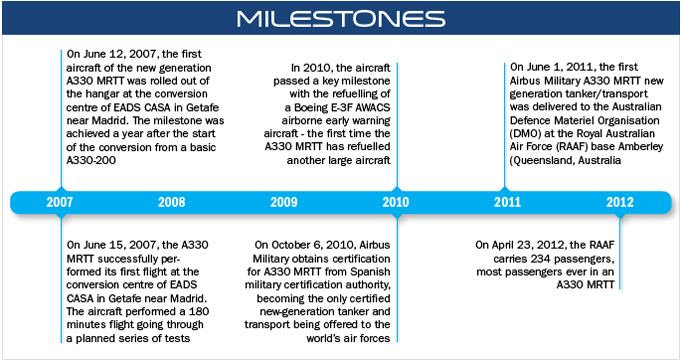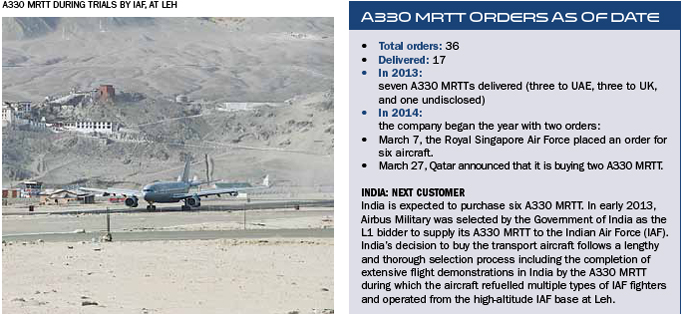INDIAN ARMED FORCES CHIEFS ON OUR RELENTLESS AND FOCUSED PUBLISHING EFFORTS

The insightful articles, inspiring narrations and analytical perspectives presented by the Editorial Team, establish an alluring connect with the reader. My compliments and best wishes to SP Guide Publications.

"Over the past 60 years, the growth of SP Guide Publications has mirrored the rising stature of Indian Navy. Its well-researched and informative magazines on Defence and Aerospace sector have served to shape an educated opinion of our military personnel, policy makers and the public alike. I wish SP's Publication team continued success, fair winds and following seas in all future endeavour!"

Since, its inception in 1964, SP Guide Publications has consistently demonstrated commitment to high-quality journalism in the aerospace and defence sectors, earning a well-deserved reputation as Asia's largest media house in this domain. I wish SP Guide Publications continued success in its pursuit of excellence.
Unmatched Force Multiplier
A military derivative of the best-selling A330 wide-body, twin-engine, commercial airliner from Airbus, the A330 MRTT symbolises a benchmark for the new-generation tanker transport aircraft of the current century

The concept of providing fuel to an aircraft in-flight was first experimented in the 1920s in the United States, the United Kingdom and in France in a rather rudimentary fashion with fuel being transferred by a hose from one aircraft to another flying in formation. While the technology related to in-flight refuelling has advanced over the last over 90 years, the fundamental concept has remained unchanged. As for the Indian Air Force (IAF), while it was formally established on October 8, 1932, it was only in the year 2000 that the organisation evinced interest in the procurement of aerial refuelling aircraft to enhance its operational potential.
However, the IAF moved reasonably fast and it was in 2003 that the IAF began inducting the first six IL-78 Russian tanker aircraft equipped with Israeli aerial refuelling pods. The IL-78MKI with the IAF has a total fuel carrying capacity of 110 tonnes. Unfortunately, the IAF was not quite satisfied with the product support available from the original equipment manufacturer for the IL-78 fleet and hence began to explore other options.
Selection of the A330 MRTT
In 2009, in a global tender floated three years earlier for six aerial tankers, the IAF selected the twin-engine Airbus A330 MRTT against the four-engine II-78 Midas to significantly enhance its aerial refuelling capability. However, the civiliancontrolled Ministry of Defence (MoD) decided to cancel the tender citing higher unit cost of the selected platform. Unit cost of the A330 Multi-role Tanker Transport (MRTT) was around $150 million as against the under $100 million quote for the IL-78. Apparently, the IAF had not catalogued the advantages the A330 MRTT offered over its competitor in respect of operating and life-cycle cost. This aspect was duly addressed by the IAF when the global tender was refloated in September 2010.
Based on comparative analysis of data pertaining to life-cycle cost of both the platforms, it was established beyond doubt that the A330 MRTT was in fact less expensive in the long term and hence was logically the lowest bidder or L1. Besides, the A330 MRTT is a product of French technology that is regarded as superior to what the competitor had on offer. The A330 MRTT also has excellent fuel economy with just two engines against the four on the IL-78. Besides, from the point of view of maintenance support, the IAF foresaw no difficulties as a large fleet of Airbus A330 airliners was already in operation with the state-owned national carrier Air India. Maintenance infrastructure as well as technical expertise is thus available within the country. Boeing could have fielded the KC-767 that reportedly had a life-cycle cost that was even lower but for some reason, opted to remain out of the race.
After a period of two-and-a-half years during which exhaustive trials were carried out involving the A330 refuelling different types of combat aircraft of the IAF while operating from airfields at high altitude in Ladakh, in January 2013, once again the A330 MRTT emerged as the preferred platform. However, processing of the case for the A330 MRTT was somewhat delayed on account of the death of a senior officer in the acquisition wing of the MoD who was directly responsible for handling the case. It is now understood that contract negotiations are in the final stages and the company has been asked to extend the validity of their commercial bid up to July 2014. The IAF has opted for the probe and drogue equipped aerial tankers but is yet to finalise the choice of the engine for the aircraft, the options being GE CF6-80E1A3, the Rolls-Royce Trent 772B and Pratt and Whitney’s PW-4168A.
However, as stated by A.K. Antony, the Minister of Defence in a press conference during Defexpo 2014 in New Delhi earlier this year, the government was not left with funds in the current financial year (2013-14) for procurement of military hardware and as such all major defence contracts would be postponed for consideration in the next financial year i.e. 2014-15. Also, as national elections are due in April-May 2014 and a new government will be in place only by end-May this year, one should expect the A330 MRTT contract to be awarded only thereafter. Fortunately, there appears to be no political overtones in this contract and as the need of the IAF for this platform has been acknowledged by the government, availability of funds would be the only factor affecting the time frame for the award of the contract.
The A330 MRTT – A Versatile Platform
A military derivative of the best-selling A330 wide-body, twinengine, commercial airliner from Airbus, the A330 MRTT symbolises a benchmark for new-generation tanker transport aircraft of the current century. The aircraft undertook its maiden flight on June 17, 2007, and formally entered service on June 1, 2011, with the Royal Australian Air Force that was the launch customer. Other customers for the A330 MRTT are the United Kingdom, United Arab Emirates, Saudi Arabia and Singapore. Apart from India, France and Spain are the possible new customers for this platform.
As for the global commercial airliner fleet of the A330, to date, over 1,100 of these aircraft have been supplied to 90 customers so far. Of these, more than 800 are currently being operated in the world and are supported by a strong product support network around the globe. This in turn would facilitate easy and efficient product support for the A330 MRTT fleet and a long operating life ahead for the aircraft. The only fully certified new-generation MRTT aircraft flying today, this platform is capable of undertaking three types of missions namely, aerial refuelling (tanker role), transportation of passengers/freight (logistic support) and medical evacuation (medevac).
With its wide-body fuselage, the A330 MRTT can be configured to carry up to a maximum of 380 passengers or 300 fully equipped troops or payload of up to 45 tonnes or can be converted to accommodate up to 130 stretchers for the medevac role. The aircraft carries 111 tonnes of fuel in the wing tanks adequate to refuel up to six combat aircraft en route and has a range of 14,800 km, with a maximum speed of Mach 0.86. The aircraft does not need the installation of additional fuel tanks as also, the capability of the aircraft to carry passengers or cargo remains unaffected. The high fuel capacity enables the aircraft to fly at longer ranges and stay on station longer. The A330 MRTT is equipped with the advanced Airbus Military Aerial Refuelling Boom System (ARBS), the only new generation and fully operational boom which allows the fastest transfer of fuel at the rate of 4,600 litres per minute to the recipient aircraft. The aircraft offers far more than any other aerial tanker in service can offer. The A330 MRTT is an unmatchable force multiplier, enhancing significantly the range or endurance of the combat fleet.
The multi-role capability of the aircraft facilitates efficient and speedy deployment of fighter squadrons as the aircraft can not only provide aerial refuelling to combat aircraft en route to destination but can simultaneously transport ground support personnel and equipment to the new operating base.
The A330 MRTT is equipped with advanced avionics which is a customised suite of military avionics and a mission system integrated with civil avionics. The electronic flight information system has six large interchangeable displays with duplicated primary flight and navigation displays and electronic centralised aircraft monitors. It is equipped with an Airbus Future Navigation System (FANS-A), including a Honeywell flight management system and Smiths digital control and display system. The aircraft boasts of the proven fly-by-wire control system developed by Airbus. It also has a comprehensive survivability package including a Defensive Aid System (DAS), fuel tank inerting system and an armoured cockpit. The A330 MRTT is also the product of the most sophisticated manufacturing techniques and offers the lowest operating costs in its class of aeroplanes. It also offers higher reliability, lower crew workload and assurance of high success rate of mission execution.
The A330 MRTT is indeed a force multiplier that is the primary choice as a platform for aerial refuelling. It offers the best performance at the lowest investment and operating costs, providing the best value for money, with potential for long-term growth as its continuing successes in the market portends.








